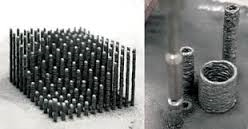
Breaking News
 Inside CES 2026: The Coolest Power Stations I Found
Inside CES 2026: The Coolest Power Stations I Found
 The Year Ahead in Sino-American Relations
The Year Ahead in Sino-American Relations
 Damning declassified documents and emails released by the CIA reveal...
Damning declassified documents and emails released by the CIA reveal...
 There are "Ghost Daycares" all throughout California. BILLIONS more stolen
There are "Ghost Daycares" all throughout California. BILLIONS more stolen
Top Tech News
 World's most powerful hypergravity machine is 1,900X stronger than Earth
World's most powerful hypergravity machine is 1,900X stronger than Earth
 New battery idea gets lots of power out of unusual sulfur chemistry
New battery idea gets lots of power out of unusual sulfur chemistry
 Anti-Aging Drug Regrows Knee Cartilage in Major Breakthrough That Could End Knee Replacements
Anti-Aging Drug Regrows Knee Cartilage in Major Breakthrough That Could End Knee Replacements
 Scientists say recent advances in Quantum Entanglement...
Scientists say recent advances in Quantum Entanglement...
 Solid-State Batteries Are In 'Trailblazer' Mode. What's Holding Them Up?
Solid-State Batteries Are In 'Trailblazer' Mode. What's Holding Them Up?
 US Farmers Began Using Chemical Fertilizer After WW2. Comfrey Is a Natural Super Fertilizer
US Farmers Began Using Chemical Fertilizer After WW2. Comfrey Is a Natural Super Fertilizer
 Kawasaki's four-legged robot-horse vehicle is going into production
Kawasaki's four-legged robot-horse vehicle is going into production
 The First Production All-Solid-State Battery Is Here, And It Promises 5-Minute Charging
The First Production All-Solid-State Battery Is Here, And It Promises 5-Minute Charging
 See inside the tech-topia cities billionaires are betting big on developing...
See inside the tech-topia cities billionaires are betting big on developing...
New tech boosts 3D printing of metal objects

A Northwestern University team has shown a new technique using liquid inks and common furnaces rather than more expensive lasers or electron beams.
In addition to being cheaper, the researchers say the process is also faster, more uniform and works with a wide variety of metals, alloys and compounds.
"Our method greatly expands the architectures and metals we're able to print, which really opens the door for a lot of different applications," said assistant professor of materials science and engineering Ramille Shah, who led the study.
Shah created a liquid ink from metal powders, solvents and an elastomer binder that could be printed through a nozzle in much the same way that plastic-based consumer 3D printers function. The printed structures are then sintered, a process in which they are heated in a simple furnace to allow the powders to merge together without melting.

 Storage doesn't get much cheaper than this
Storage doesn't get much cheaper than this

